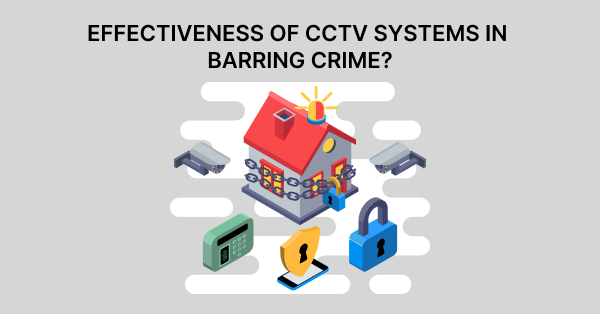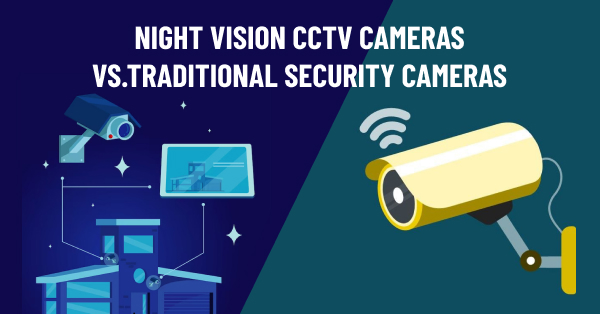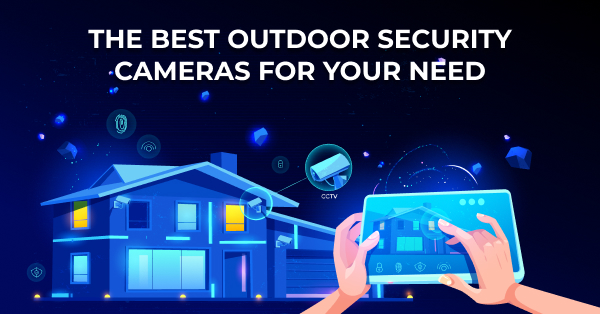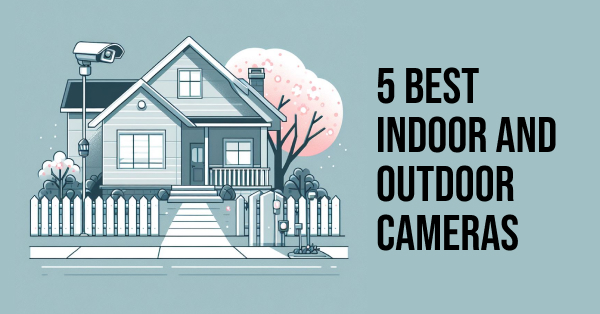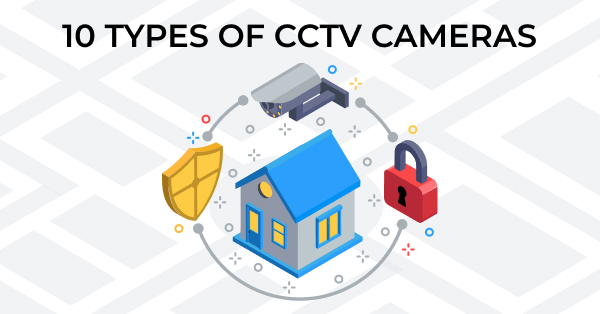
Top 10 Types of CCTV Cameras | Secure by CCTV
Explore the top 10 types of CCTV cameras for various security needs. Learn about different features and applications to make informed choices.
Introduction
Closed-circuit television cameras, or CCTVs, are an essential part of improving security. These cameras are made to keep an eye on and document activity in particular areas, supplying observable proof that can be utilized for a number of reasons. Since their mere presence serves as a potent deterrent, CCTV cameras are significant because of their capacity to discourage crime. They provide real-time surveillance so people can watch things happening in their homes, workplaces, or public areas from a distance. CCTV cameras can be installed in a variety of places, including public spaces, offices, banks, residential complexes, and retail establishments, in order to maintain security and deter theft, vandalism, and illegal entry. Their video can be utilized for inquiries and legal actions, assisting law enforcement in identifying offenders and obtaining proof. CCTV cameras are a vital tool for protecting people, property, and valuable assets because they improve security both literally and figuratively.
Dome Cameras
Popular CCTV camera models with wide-angle coverage and a covert appearance are dome cameras. The dome-shaped housing of these cameras is one of their distinguishing features, and it has various benefits. First, the dome shape makes it harder for people to figure out which way the camera is pointing, increasing its efficacy as a deterrent to would-be criminals. Furthermore, dome cameras are extremely robust and impervious to tampering because they frequently have vandal-proof features. In certain situations, dome cameras’ wide-angle coverage enables them to monitor larger areas with just one camera, eliminating the need for multiple cameras. They are, therefore, an affordable surveillance solution. Their capacity to record expansive vistas aids in reducing blind spots and optimizing the field of vision.
Dome cameras have a wide range of ideal applications because of their covert appearance and broad coverage. They are frequently used in airports, retail establishments, shopping centers, and other public areas where keeping an eye on a big area is essential. Dome cameras can be used for interior surveillance in warehouses, offices, and residences. Thanks to their subtle appearance, they blend in well with the surroundings and are less obtrusive. In conclusion, dome cameras are a flexible and effective option for surveillance in various contexts due to their stealthy appearance and wide-angle coverage.
Bullet Cameras
The bullet camera is one kind of CCTV camera that works well for outdoor surveillance. They got their name because of their bullet-like, long, cylindrical shape. These cameras have several important features that make them ideal for outdoor use. Their ability to see far away is one of their main benefits. Because bullet cameras have strong lenses, they can take detailed, crisp pictures at a considerable distance. They are therefore perfect for keeping an eye on wide open areas like parking lots, building facades, and perimeters. The weather resistance of bullet cameras is another noteworthy feature. They are designed to survive various weather circumstances, such as rain, snow, dust, and extremely high or low temperatures.
Regarding outdoor surveillance, bullet cameras are frequently utilized because of their exceptional long-range visibility and weather resistance. They are frequently used in locations like building sites, airports, and industrial facilities where high-definition footage is necessary. These cameras offer a reliable deterrent and monitoring solution for outdoor areas like driveways and yards, making them the preferred choice for home security systems. Overall, bullet cameras provide dependable outdoor surveillance because of their strong construction, long-range visibility, and weather resistance.
PTZ Cameras
Large-scale surveillance is made possible by the versatile monitoring capabilities of pan-tilt-zoom (PTZ) cameras, a type of CCTV camera that can rotate, tilt, and zoom. PTZ cameras have a motorized mount that lets them zoom in and out, tilt vertically, and pan horizontally. This makes it possible for the camera to cover a large area and record small details even when it is far away. The flexibility of PTZ cameras is one of their main benefits. Real-time target tracking is made feasible by the remote control of the camera’s focus length and angle.
Additionally, PTZ cameras have features like preset positions and motion detection, allowing them to move automatically to predefined locations when triggered. Because of this, they can be used to monitor and secure expansive outdoor areas like parking lots, stadiums, and building sites. PTZ cameras are also used for critical infrastructure surveillance at airports and power plants. These regions usually call for sophisticated surveillance systems to take in-depth pictures and identify possible dangers.
PTZ cameras work well for this because they provide flexible monitoring options and excellent image quality. To sum up, PTZ cameras are a very adaptable kind of CCTV camera that works well for monitoring and surveillance over a wide area. They’re a popular option for various applications, including large outdoor spaces, critical infrastructure, and more, because of their versatility and efficiency, which stems from their ability to rotate, tilt, and zoom.
Covert Cameras
A type of CCTV camera called a covert camera, sometimes called a hidden camera, is made to blend in with its surroundings and provide covert surveillance. These cameras are made with the intention of being undetectable; they frequently mimic commonplace items or are covertly positioned throughout the environment. Covert cameras are primarily used to record surveillance footage without drawing attention to themselves. This makes them a useful tool for surreptitiously monitoring sensitive areas or gathering evidence. They are frequently employed in situations where it may not be feasible to conduct overt surveillance or where keeping a low profile is essential. Covert cameras are useful in a variety of settings, such as public areas, offices, retail establishments, and homes, as they add an extra degree of security without drawing attention to themselves.
Day/Night Cameras
A type of CCTV camera called a day/night camera is made to take excellent pictures both during the day and at night. Day/night cameras use infrared (IR) illuminators to take sharp pictures in low light. The light emitted by these illuminators is undetectable to the human eye, but the camera’s sensors can detect it. The camera then uses the extra light to improve the footage it takes. The ability of day/night cameras to take excellent pictures in low light is one of their main advantages. They are therefore perfect for outdoor surveillance where fluctuating lighting conditions may occur. Day/night cameras, for instance, are frequently utilized in parking lots, neighborhoods, and other outdoor spaces with potentially poor lighting. Day/night cameras’ infrared capabilities allow them to take detailed pictures even in total darkness, improving the area’s security.
Infrared-capable day/night cameras complement any CCTV system, delivering clear surveillance video under even the most difficult lighting circumstances. Businesses, law enforcement, and other organizations rely on them to improve the security of their locations and use them frequently for outdoor surveillance.
Thermal Cameras
Using cutting-edge technology by CCTV cameras to identify heat signatures given off by people or things is known as thermal imaging. They measure an object’s infrared radiation emissions, which are directly correlated with the object’s temperature. This allows them to identify objects that conventional cameras might miss. This is particularly helpful in scenarios where people or objects must be identified in dimly lit or completely dark environments.
One of its main advantages is the capacity of thermal cameras to produce sharp images and improved visibility in difficult situations, like total darkness, smoke, or fog. Because of this, they are ideal for perimeter security, monitoring outdoor industrial facilities, and locating heat leaks in commercial or residential structures.
Thermal cameras produce high-quality images by using a heat detection system to identify temperature changes. To meet the specific needs, they are offered in a variety of configurations, including rotating and fixed models, with differing levels of resolution, image quality, and thermal sensitivity.
Wireless Cameras
Wi-Fi cameras, sometimes referred to as wireless cameras, are a popular option for CCTV systems because they provide a number of benefits, including flexibility, ease of installation, and remote access.
The simplicity of installation is a major benefit of wireless cameras. As wireless cameras don’t need a lot of wiring like traditional wired cameras do, setup takes less time and effort. Completing complex cable installations is not necessary because they are easily mounted and connected to the current Wi-Fi network.
Wireless cameras provide remote access, enabling users to watch recordings and live video from computers, tablets, and smartphones. This allows for flexible access to the camera feed from any location with an internet connection and allows for real-time monitoring. Homeowners and business owners who wish to monitor their property while away will find it especially helpful.
Wireless cameras have benefits like flexibility, ease of installation, and remote access. They can be installed in different locations, offer remote monitoring capabilities, and do not require extensive wiring. Modern networks can be easily integrated with wireless cameras, making them a convenient and adaptable option for CCTV systems.
Network Cameras
Video can be transmitted over internet networks with IP-based network cameras, allowing for integration with other security systems and remote access. They provide better data transmission, better analytics, and high image quality. IP-based network cameras are a great option for an all-inclusive CCTV surveillance system because of their accessibility and integration with other security systems.
High-Resolution Cameras
Specialty Cameras
Conclusion
The blog highlights how crucial it is to select the best CCTV cameras for your needs in terms of specific security. Various specialized cameras include PTZ, thermal, LPR, 360-degree, low light or day/night, weather-resistant or vandal-proof, and hidden or covert cameras. Each kind has a distinct function and provides features that are tailored to meet particular surveillance needs. Key points covered include PTZ cameras’ flexibility, thermal cameras’ thermal detection capabilities, LPR cameras’ license plate reading functionality, 360-degree cameras’ comprehensive monitoring, certain cameras’ low-light performance, vandal-proof or weather-resistant cameras’ durability and weather resistance, and the covert or hidden cameras’ discreet surveillance.
The blog emphasizes how people and organizations can improve their surveillance capabilities and guarantee efficient monitoring and protection of their properties by choosing the right type of cctv camera for particular security needs.


